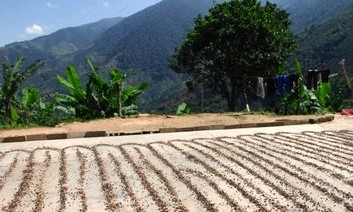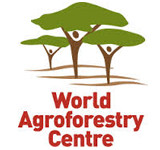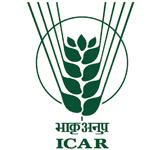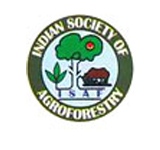
Vigyan Bhavan & Kempinski Ambience
10 - 14 February 2014
Delhi, India
blog

I lived in San Isidro, Venezuela in 2013 to investigate reasons why farmers plant trees despite the common belief that trees interfered with their crops. Locals say their communities were founded hundreds of years ago by families travelling the Andes with Venezuelan Independence hero Simon Bolivar. These families developed a deep knowledge of the land and had once thrived as farmers.
I was interested in defining factors that predicted smallholder tree planting so that support services could improve programs that promote tree cover in the area. According to studies on Forest Transition, smallholder tree-based land systems notably contribute to global tree cover (Lambin and Meyfroidt 2010). Research also confirms that trees contribute to food security, secure tenure, climate mitigation and overall healthier communities. My research interests were driven by the idea of multifunctional landscapes. Can we manage land for food, income, communities and the ecosystem?
Farming in San Isidro
My neighbour made crashing noises as she described the landslides that destroyed land and homes in 2005. Many farmers realized that tree cover could have reduced the destruction. Since then, Venezuela’s government has invested in technicians who instruct farmers to plant trees. The government also manages several reforestation programs that hand out trees, establish local nurseries, and run education programs to promote tree planting.
San Isidro is a 52 km2 micro-watershed in the Mocoties Watershed, Merida, Venezuela. One farmer from the watershed told me, “Sadly we have deforested and converted from the coffee industry to the cattle industry”. However, in San Isidro, the locals say the coffee industry has been spared because of the cooler climate. While I was there, I adjusted to the perfume of fermented coffee. We were offered up to five sugary cups of coffee in tin mugs everyday, coffee that had dried and roasted on local patios. Farmers generously shared memories of coffee varieties that grew under trees and tree oil collected for lamps that they used before electricity.
San Isidro represents three distinct agricultural land-uses along a 2300 m elevation gradient. Many households rely on farming as their main source of income. The highest and coolest communities produce potatoes, carrots and onions. The lowest and warmest community had mostly abandoned farming after experiencing heavy pest infestations, though some households recently produce citrus. In mid-elevation communities, smallholder farmers struggle to produce coffee to sell in a heavily regulated national market at a fixed price.
Selling harvests provides farmers with a small income, but many households rely on subsistence farming, trading with neighbors, and government assistance to support a healthy rural life away from insecurity in the city. As a result, the government of Venezuela provides many support services such as subsidized supplies, credits, and technical service to support farmers. I also noticed many new schools, clinics and houses that the government had funded.
Despite this, many farmers complained to me about disappointing support programs that did not provide enough technical service, adequate coffee prices, and credits. They told me that subsidized fertilizers were scarce and other options were too expensive. They also told me about a changing climate with unpredictable rain that ruins their crop. I knew farmers who used their credits to purchase motorbikes; many who regretted that they would not be as valuable to their families in the long-term as increasing their production of coffee. The youth in the community sometimes missed school to make money, instead spending their time harvesting vegetables on other farms.
Findings
My results revealed that many farmers had planted trees. Therefore, I examined economic and environmental reasons for tree planting separately. In the 150 surveys collected over two months of hiking through the fog, I found the following:
1. 80% listed economic reasons for planting trees, such as collecting timber and food; 47% listed environmental reasons for planting trees such as erosion control, maintaining water sources, and providing shade.
2. Most of the factors I identified from previous studies on smallholder tree planting contributed to tree planting for economic reasons but few of these factors were significant to tree planting for environmental reasons.
3. Elevation vastly altered the needs of farmers in the micro-watershed. Farmers in the lower communities were interested in trees to improve their ability to farm. In the higher elevation, farmers lived in cloudy climates and were more interested in growing trees to produce alternate sources of income.
4. Households who received support services were not more likely to plant trees.
Past studies focused on commercial tree planting to increase household income and the influence of factors that were not included in these studies, like environmental services (e.g. water), was less understood. However, I found these missing factors were significant to tree planting for environmental reasons. This could be especially relevant as a way to promote tree cover in communities with limited income opportunities.
Conclusions
My experienced taught me that communities like San Isidro have vulnerable livelihoods. They adjust to these livelihoods by finding ways to survive and rely on the government for additional assistance. They plant trees for complex reasons: maybe for food, to sell as timber, or to protect a valuable source of water. Unfortunately, many support services they receive do not effectively promote tree planting.
To promote multifunctional landscapes we need to understand the many ways smallholders value trees and use this knowledge to scale up initiatives that promote tree planting. It is crucial to consider both environmental and economic decisions as well as the factors that influence them. Without a deep understanding of smallholder values, we will limit the functions of our landscapes and continue to fall short on sustainable land-use goals.
Photo: Coffee drying- San Isidro, Merida
Blogpost and photo by Kumary Ponnambalam/ Faculty of Forestry, University of Toronto (Toronto, Canada) – kumary.ponnambalam(at)mail.utoronto.ca
She is supervised by Shashi Kant and supported by SSHRC and partners at INDEFOR.
|
This post is entry nr #1 for our #WCA2014 blog competition. The five blogposts with the most and highest votes will receive a signed copy of the book "Trees for Life". The most popular blogpost will get an iPad.
This blogpost received 88 votes, with an average score of 5 (out of a max of 5).
Follow our #WCA2014 social reporting team via the #WCA2014 tag on Twitter, our blog and our Facebook page.
|






6 People have left comments on this post
Yet another reason to live among the people, to figure out their problems better, and hopefully help them and help us. Good job Ms. Ponnambalam
very informative. congrats for the effort taken.
Great job.
A wonderful reminder to work and adjust with our environment if we would like to comfortably survive and leave a healthy and fruitful legacy to our children and grand children.
The blog is very illustrative of the need for sustainable development of multifunctional landscapes.
Here is a related TED talk that highlights how one can improve yield at the same time as improving the environment. If the claims are true, such activities could also lead to reduced deforestation. Best wishes in your endeavor.
Subject: TED Talk about mycorrhiza and the looming Phosphorus crises
http://www.ted.com/talks/mohamed_hijri_a_simple_solution_to_the_coming_phosphorus_crisis.html?utm_source=newsletter_daily&utm_campaign=daily&utm_medium=email&utm_content=image__2013-10-29
Everything is money. Work for money, migrate for money.
So farmers also will look for money, in addition to other benefits of agroforestry.
Scientist shall support for right selection of trees for their soil and need